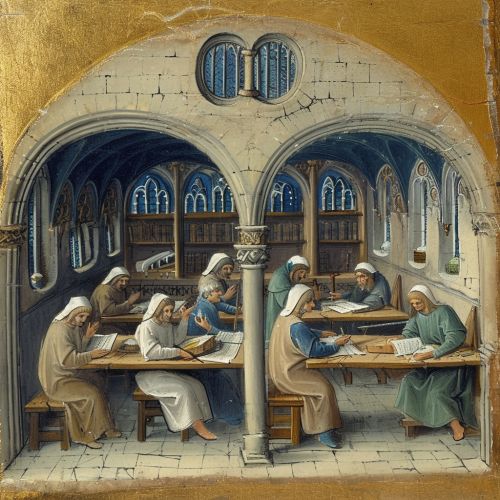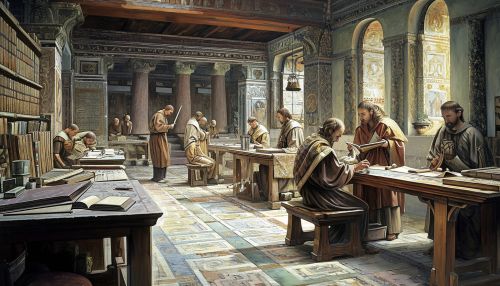Carolingian Renaissance
Introduction
The Carolingian Renaissance was a period of intellectual and cultural revival in the Carolingian Empire occurring from the late 8th century to the 9th century. This period was marked by a heightened focus on education, literature, art, and architecture, which were largely influenced by Christian, Roman, and Byzantine cultures.


Historical Context
The Carolingian Renaissance is named after the Carolingian dynasty, particularly in reference to its most famous representative, Charlemagne. The Carolingians were a Frankish noble family with origins in the Arnulfing and Pippinid clans of the 7th century AD. The family consolidated its power in the late 8th century, eventually making the Carolingian Empire the dominant force in Western Europe.
Characteristics
The Carolingian Renaissance was characterized by efforts to standardize education and script throughout the Empire. This was largely achieved through the establishment of court schools, where classical Latin learning was promoted. The Carolingian script, a clear and legible script, was developed and used in these schools, replacing the earlier Merovingian script.
Education
Education was a central aspect of the Carolingian Renaissance. Charlemagne, in particular, was a strong advocate for education and literacy. He instituted educational reforms throughout the Empire, promoting the liberal arts at court, establishing court schools, and encouraging monastic studies.
Literature
The Carolingian Renaissance saw a surge in the production of literature. Most of this literature was religious in nature, but there were also many secular works. The period saw the creation of a number of important works, including the first major collection of canon law, the "Decretum Gratiani," and the earliest Western musical notation, the "Musica enchiriadis."
Art and Architecture
Art and architecture flourished during the Carolingian Renaissance. The period was marked by a return to Roman models, which were viewed as the standard of beauty and skill. Carolingian art is characterized by its attention to detail, its use of Christian and classical themes, and its blending of Roman, Germanic, and Byzantine elements.
Legacy
The Carolingian Renaissance had a lasting impact on European culture and history. It laid the groundwork for the development of medieval Latin culture and the Carolingian minuscule, an easily readable script, was adopted across Europe and remained in use until the Gothic script of the High Middle Ages. Furthermore, the Carolingian Renaissance paved the way for the later cultural revivals of the 12th and 13th centuries.
